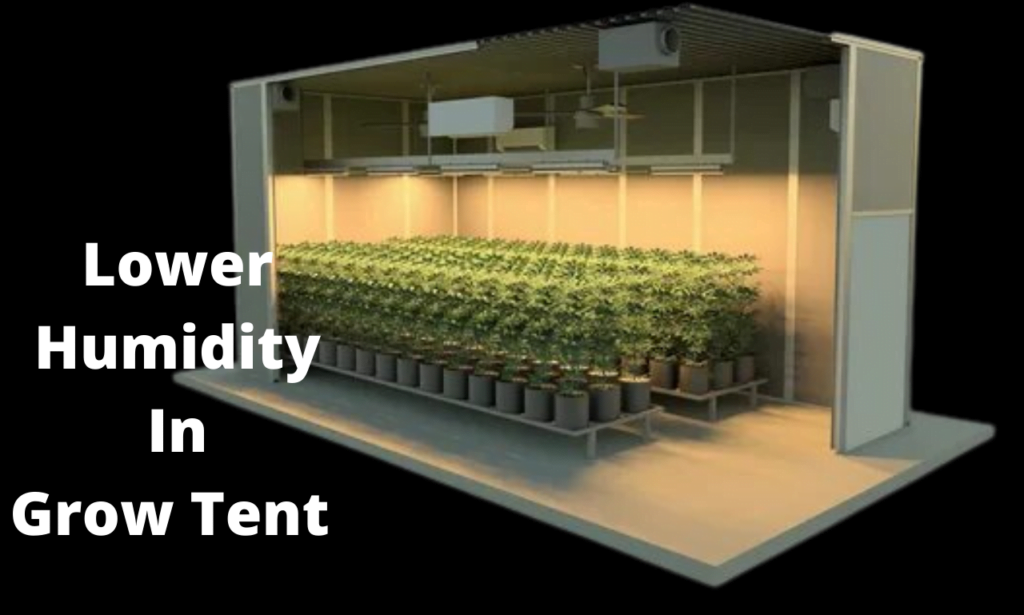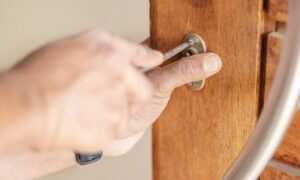

The humidity level varies according to the ambient temperature. The hotter the air, the more moisture it can hold, such as in a sauna. Conversely, the colder it is, the less it retains. This is why when the lamp goes out, the humidity in the air increases and condenses. The humidity level is also a factor to be mastered within discretion.
Know how to interpret my humidity level according to the different stages of cultivation.
Here we tell you how we can Control Grow Tent Temperature. How to properly manage ventilation to regulate the temperature?
Know how to interpret my humidity level according to the different stages of cultivation
Humidity and temperature are difficult to control with precision unless you buy high-performance but very expensive equipment (not necessary). In a growth space of one square meter or less, a thermometer/hygrometer will be more than sufficient. The humidity will be indicated in% from 0 to 100 (0% there is no humidity present in the air, 100% the air is saturated with water vapour).
The ideal temperature and humidity values to be respected for each moment of the plant’s life are purely theoretical. It’s good to respect them, but the most important is getting a humidity around 50% and a stable temperature all year round.
High humidity at the start of the plant’s life (in a grow tent)
We suggest that you achieve a high humidity level during the beginning of the plant’s life. That is to say, from germination to its first transplantation, where the humidity can go down but not suddenly. The reason is simple: the plant has no or very few roots. So she becomes dehydrated, she cannot draw water from the coconut, and as a result, she dies.
A humidity level greater than 90% is very easy to obtain in a greenhouse, so you will have no difficulty in achieving it. However, be aware of the temperature, which can quickly rise. Seedlings are fragile and may not withstand a temperature above 28 degrees. The small windows in your mini greenhouse serve to dissipate heat and excess moisture. Once your rooted plant is ready to be transplanted, you no longer need the greenhouse. Normally at this stage, the plant will have developed its first leaves.
Then, the humidity should gradually drop to stabilize on average at 50% (light on)
When your plant is transplanted into its first 1L pot, make sure that the humidity does not drop drastically since there will be no greenhouse (minimum 50%). Indeed, until a well-developed root system is obtained, the plants will (always) be very sensitive to too low humidity.
The installation of a humidifier is not normally necessary (except if you are in a too dry atmosphere). Spraying the leaves with clear water (pH 7) regularly is sufficient. The temperature should not exceed 28 degrees. Remember to adjust your extractor.
With the onset of flowering, the humidity can drop safely to 40%. Remember, however, that red spiders are fond of low humidity and high temperature. Pay attention and regularly look underneath the leaves for pests. The earlier the problem is diagnosed, the easier it is to counteract.
The temperature must remain stable between 20 and 25 degrees. In winter, when temperatures are low, you can heat the room, which will lower the humidity at the same time. If you do not have a radiator in this room, you can add an oil bath radiator in your box or next to the air intake.
And when the lamp is off, during the night?
We have seen that hot air contains more moisture than cold air. So when the CMH lamp goes out, the humidity in your box will increase. The hygrometry must not exceed 80% in growth and 60% in flowering for the night period.
In case of humidity between 60 and 70% in flowering, this can pass without a problem. It all depends on the variety but, above all, on the brewing strength. By ventilating 24 hours a day, then there should be no mould problem.
The installation of an oil bath radiator is an excellent solution in winter. Some have a built-in timer that allows it to run only when the lamp goes out.
How to properly manage ventilation to regulate the humidity level?
A determining factor
One of the keys to successful indoor cultivation is to renew the air correctly in order to regulate the ambient temperature and provide carbon dioxide (Co2). The location must be strategic for your box (near a half-open window, an air vent or in a room that is itself regularly ventilated).
The fundamental thing to remember is that the hot and humid air rises while the fresh air remains on the ground; it is necessary to install its extractor in height thanks to the straps. The equipment is light and relatively compact.
The extractor extracts the stale air, and the fan circulates the air between the leaves to homogenize the consumption of Co2.
Save money on an extractor with proper installation
The extractor inlets/outlets are 125mm and are compatible with the carbon filter and the ducts of the box. It is not necessary to add an air interactor (air extractor mounted upside down so as to introduce air into the tent). Indeed, the extractor alone will be powerful enough to suck the air through the mosquito nets available in your grow tent.
The air intake will then take place passively, thanks to a single motor. The culture chamber will contract on itself when the extractor is on, and this is completely normal.
Extractor management
The extractor should never be turned off to prevent mould from setting in during the night. Avoid setting your extractor to too low a temperature; otherwise, it may stop for too long.
Plants grow best in a relative range of 40-60%. It should be understood that plants transpire thanks to their stomata; when the humidity is high (+ 60%), the water evaporates slowly. Then the stomata close, and the plant sees its growth slow down.
Fan management
Without fresh air, growth is stunted. It is necessary to reproduce the external conditions, and for that, in addition to the extractor, it is necessary to add a fan. Experienced growers know how important this parameter is and take the time to install adequate ventilation.
Stirring the air towards your plants will keep the air in constant motion, making your plant stems sturdy and preventing mould and red spider mites from attacking. All the leaves at the top of your plants need to move to prevent CO2 depletion of the air. In fact, CO2 is consumed in enormous quantities every day when the lamp is on. The humidity level will be automatically stabilized.
Be careful, however, not to blow air constantly on the same plant at the risk of seeing the leaves dry up and become crisp; if this is the case, change the location of the fan to move the air to another place.






